Agnes Akom: Man, 64, jailed for power tool murder of young woman
- Published

Agnes Akom, who was known as Dora, disappeared in May 2021
A man who murdered a young woman with a power tool inside a converted shipping container and buried her in a north London park has been jailed for life.
Neculai Paizan, 64, had denied killing Agnes Akom, 20, but was convicted of murder last week at the Old Bailey.
He struck Agnes at least 20 times over the head with the electric jigsaw tool.
Police said the level of violence was truly horrific and believed he may have launched his attack after Agnes refused to have sex with him.
Paizan was jailed for life with a minimum term of 22 years.
Judge Richard Marks QC told him: "It is clear on your lengthy evidence that you remain in a complete state of denial as to what you did in that frenzy of violence that took away that young girl's life at the age of 20.
Ms Akom, who was known as Dora, was last seen on 9 May 2021 leaving her home in Brent, north London.
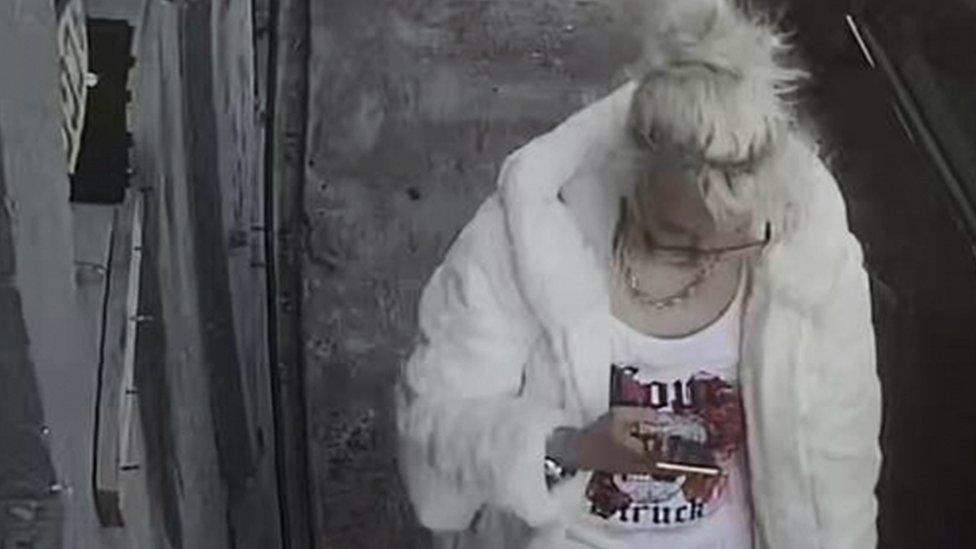
CCTV footage showed Agnes Akom walking to Neculai Paizan's container, but never showed her leaving alive
Initially she was treated as a missing person - one of around 100 people reported missing every day to the Metropolitan Police.
Most are found, but after a week, with no sign of Ms Akom, local officers passed the case to the Met's Specialist Crime Command.
"Agnes had not made contact with her partner, her family, her friends," said Det Ch Insp Neil John who led the investigation.
"She was also an avid social media user and there was nothing from her there. There were no transactions on her bank account."

Neculai Paizan admitted knowing Agnes Akom and initially said that he had met with her about two weeks earlier
The last time she had used her bank card was in a coffee shop on the day she disappeared.
This gave officers their starting point. CCTV gathered from this area showed she had got into a car which was traced to Paizan.
Police established lorry driver Paizan was living in a converted shipping container in Brent in north-west London.
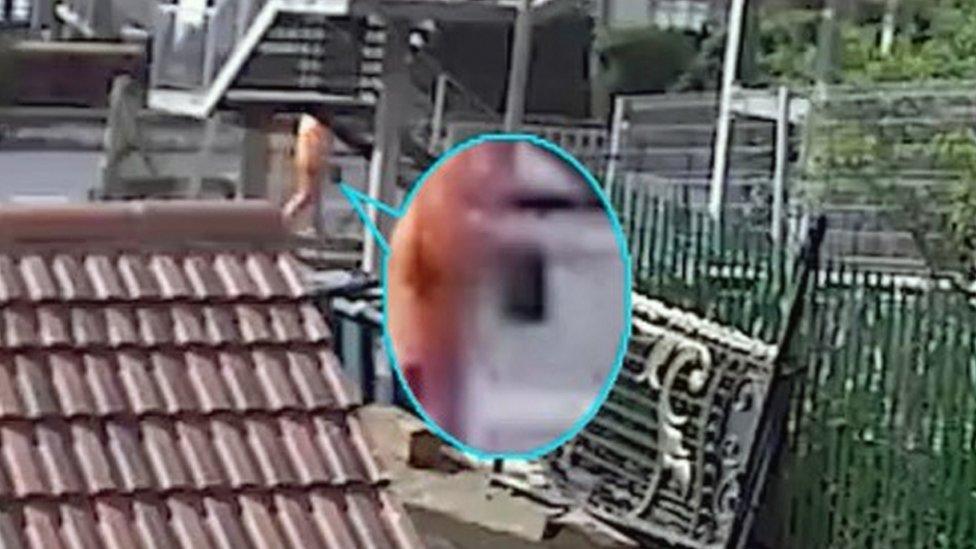
CCTV footage showed Neculai Paizan walking in Brent with a shovel
Paizan admitted to police he knew Ms Akom and said he had initially met her when he saw her begging and they began an intermittent sexual relationship.
He told detectives on the day she disappeared she had gone into the container with him and they had left together.
But, while local CCTV footage showed them both going in, only Paizan was seen coming out.
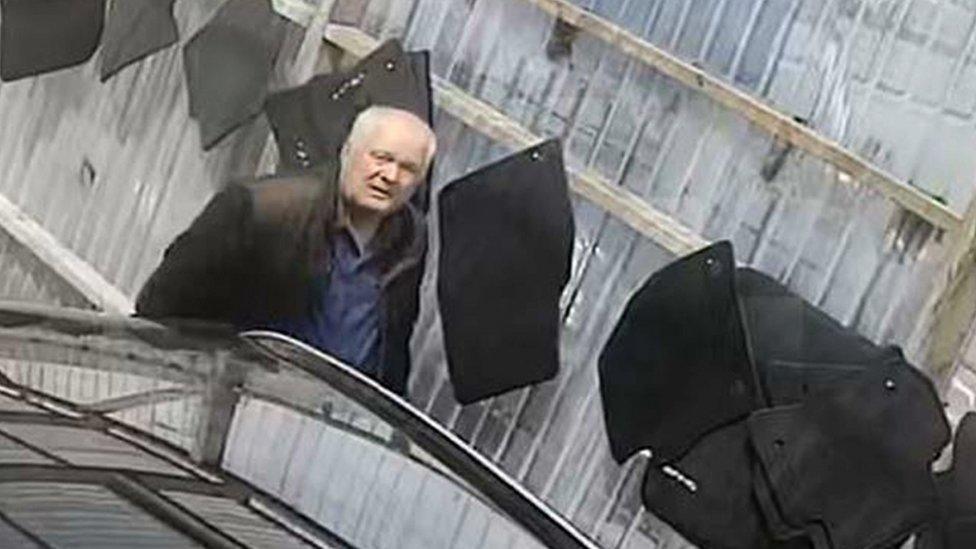
Police said it is likely Neculai Paizan "preyed upon" Agnes Akom's vulnerabilities "to abuse her - ultimately leading to her murder"
"There is a chilling image of him looking up at the camera," says Det Ch Insp John.
"It will remain with me forever. And then he comes out an hour later and she's never seen again. A person goes into the container but they don't come out. Where are they?
"We took the container apart. The floors came up, the walls came out, the ceiling was taken down. We had a drone up on the roof, thinking could Agnes have climbed up somewhere?"
Detectives then established that Paizan was leasing a building next door to the container.
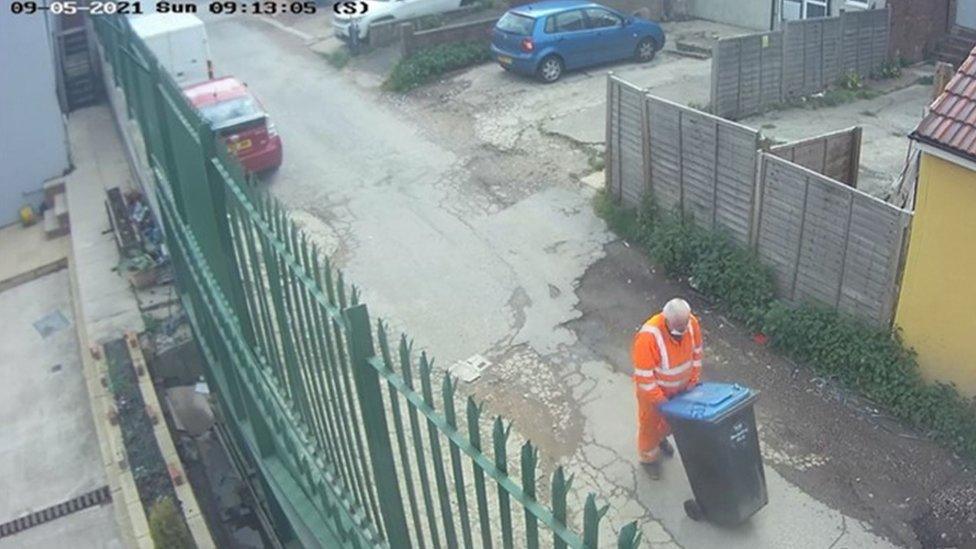
Neculai Paizan is believed to have carried Agnes Akom's body in a wheelie bin before disposing of it in a park
It was subjected to a similar rigorous search and the team discovered it was possible to move from the container to the building.
On the day Ms Akom disappeared, CCTV footage showed Paizan dragging a builders' bag out of the rear of that building.
The bag, it later emerged, contained Agnes's body. The following day he transferred the young woman's body into a wheelie bin and then buried it.
Paizan, a Romanian national, was arrested and then charged two weeks after the killing. Ms Akom's DNA had been discovered in his car, in the container and in the building next door.
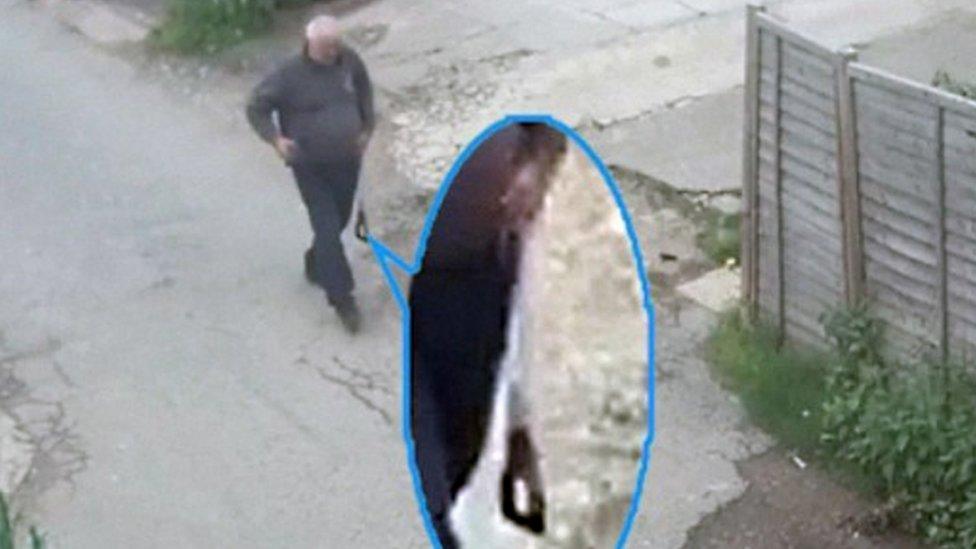
An extensive review of Agnes Akom's phone records established she had regularly been in the vicinity of a phone belonging to Paizan over a 12-month period
The power tool murder weapon, an electric jigsaw, was recovered with other evidence, including Ms Akom's clothes in a skip.
But officers were still hunting for her body.
As part of their search, they spent four days at a waste transfer site sifting through 60 tonnes of rubbish but found nothing.
Eventually, by retracing Paizan's known movements, the investigation team went to Neasden Recreation Ground.
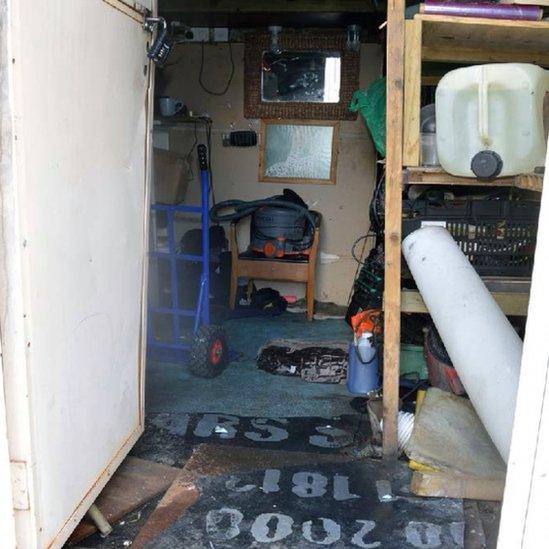
Neculai Paizan had a shipping container in north-west London
Alerted by search dogs, near a fallen tree, under logs and branches they uncovered Ms Akom's body 36 days after she had disappeared.
"It was such a relief to find her for the family and for the team," says Det Ch Insp John.
He and another officer travelled to Hungary to return Agnes's ashes to her family after she was cremated in the UK.
A victim impact statement was obtained, which was read out at the Old Bailey before Paizan was sentenced.

Police photos showing a heavily-stained bed inside the shipping container
It said that Paizan had dragged Ms Akom's body when she was alive, and dragged her name through the mud after her death, a reference to some of the claims Paizan had made about Agnes during his evidence to the jury.
Ms Akom's partner, Peter Lenart, described how at the time of the murder the couple had been writing a letter to their young son who was being fostered.
"How am I supposed to finish that letter without her?" he said.
In his sentencing remarks, the judge praised the Metropolitan Police for its "exceptional" work in the investigation. In all, about 100 people were involved.

Follow BBC London on Facebook, external, Twitter , externaland Instagram, external. Send your story ideas to hellobbclondon@bbc.co.uk, external
- Published19 July 2022

- Published13 July 2022

- Published6 July 2022
